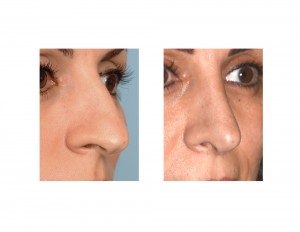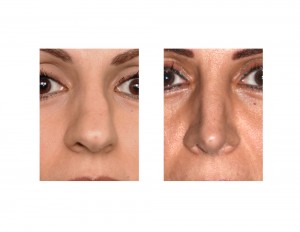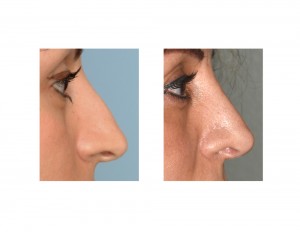Background: Ethnic rhinoplasty is a term used to describe nasal reshaping surgery for specific type noses based on racial background or country(s) or origin. The Middle East is made up of a wide variety of countries and cultures whose nose shapes can be as varied as the collection of countries that make up the region. Having treated patients from Egypt to Yemen, the nose changes desired by Middle Eastern patients can range from correcting a long drooping nose, getting rid of a large nasal hump, to making the overall nose smaller.
While no one single nose shape defines any ethnicity, the nasal structures of Middle Eastern people often have thicker more oily skin with a fatty nasal tip. Having a high dorsal hump or bridge of the nose is particularly common. With a large nasal hump as part of the overall underlying septal overgrowth, the nose is elongated and the tip is often driven downward. (droopy tip) The nostrils may be wide or flared. Breathing difficulties can be present with septal deviations as it often develops deviations due to large shape.
In Middle Eastern rhinoplasty, like all ethnic rhinoplasties, you want to change the nasal shape to one of better proportions between its parts but without compromising or losing certain aspects of their ethnic heritage. This is best avoided by not trying to do too much or make attempt to make a small nose when that is not really possible. Modest changes in the height of the hump and shortening the tip will preserve some ethnic appearance while also preserving or improving nasal breathing.
Case Study: This 37 year-old Middle Eastern female (Syrian) wanted to improve the shape of her nose. She felt it was too big and long. She had no breathing problems.


Highlights:
- Middle Eastern rhinoplasty is nose reshaping surgery performed on patients who have genetic ties to the region, not one specific rhinoplasty method.
- It is important in reducing larger noses that one does not try and make a nose that is too small, which can have negative aesthetic and nose breathing consequences.
3. Middle Eastern rhinoplasty must take into account the limitations of the thicker skin and more fatty nasal tips.
Dr. Barry Eppley
Indianapolis, Indiana



